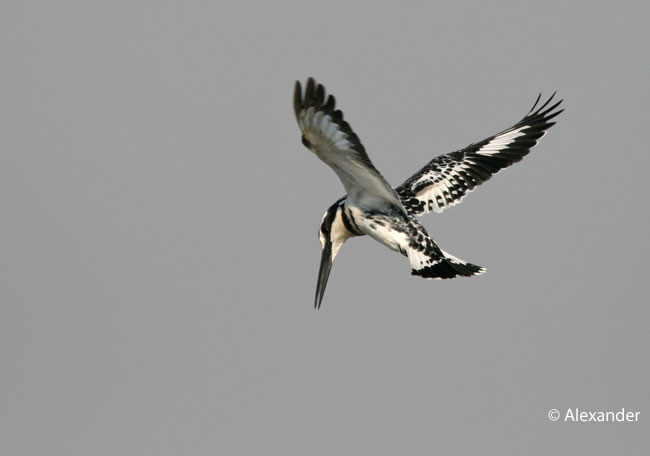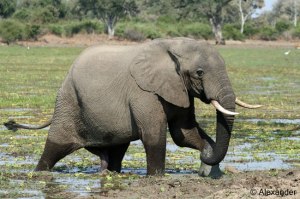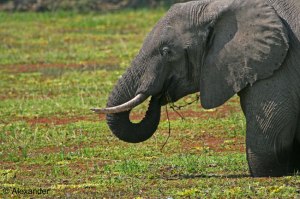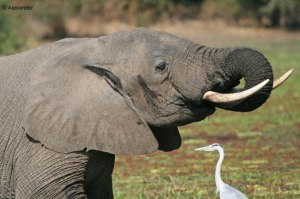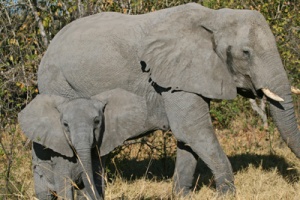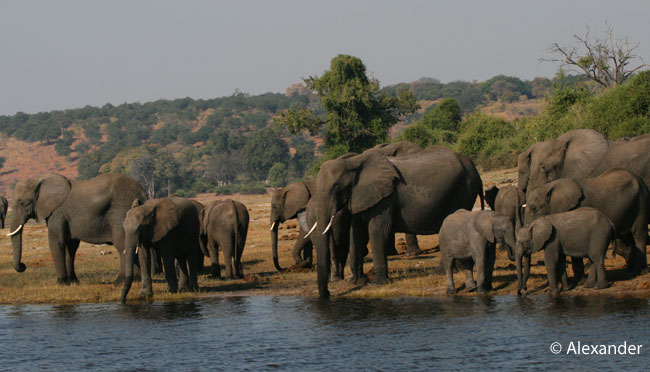

Botswana has the largest population of elephants in the world at 130,000 individuals. It is in the center of Southern Africa, and landlocked.
Elephant populations, as most people are aware, are struggling for survival. This species of elephant, the African bush elephant, is endangered.
We had the fortune of observing many elephants on land while there, and then one special day we watched three bulls in a face-off in the middle of the Chobe River.
All photos here are taken in one area of the Chobe on one afternoon.
It was the dry season (early August), a time when elephants gather here for the water.

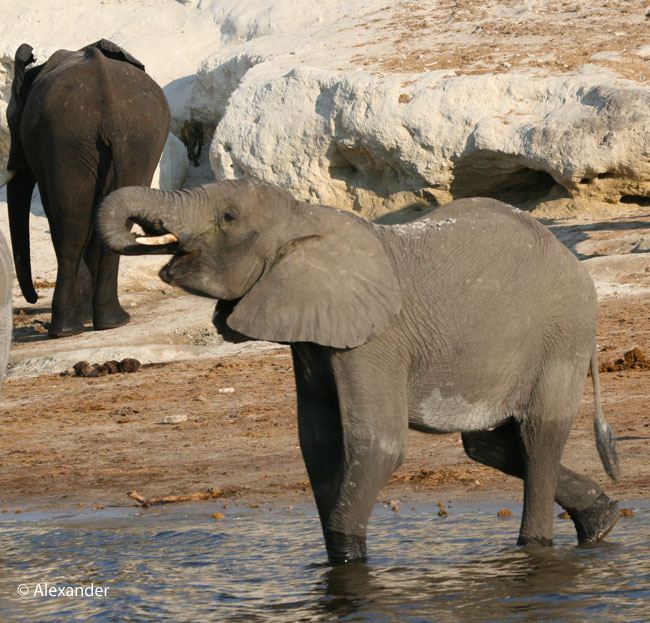
Plenty of other wildlife congregate at the river, too. Cape Buffaloes, Storks, Zebra, Warthogs and more.



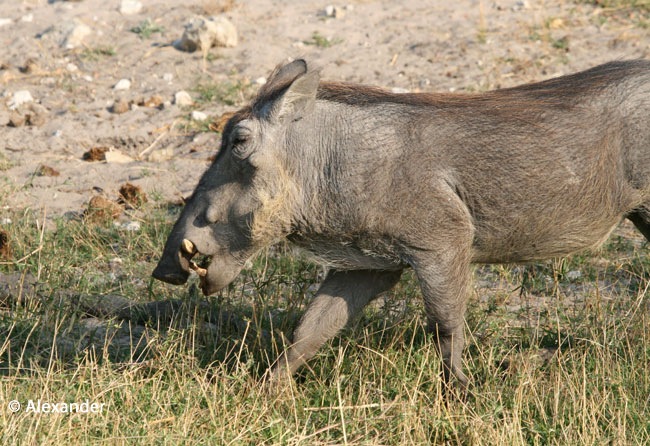
Below is the goliath heron, the world’s largest heron with a wingspan of over 6 feet (2 m). There’s a cormorant in the grass, too.
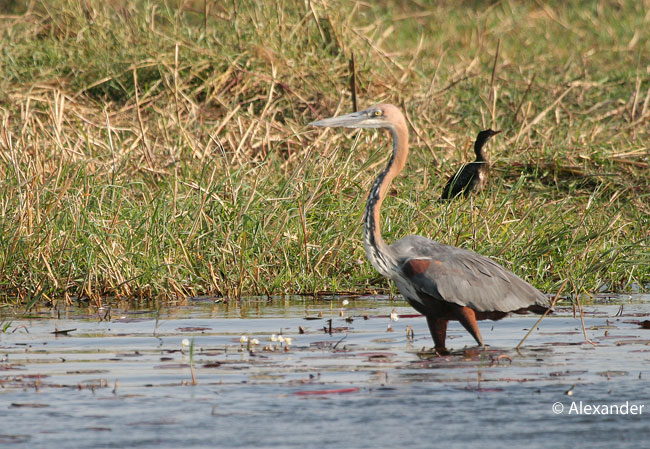
More info:
A male elephant is known to drink 60 gallons of water a day, and as much as 26 gallons of water at a time. So this is prime real estate–lots of water in a landlocked country.
As we were slowly cruising along on the river, we came upon three bull elephants in a territorial dispute. Our guide cut the engine and we quietly floated, watched for about 15 minutes.
It all started when one bull left the shore and walked deep into the middle of the river.
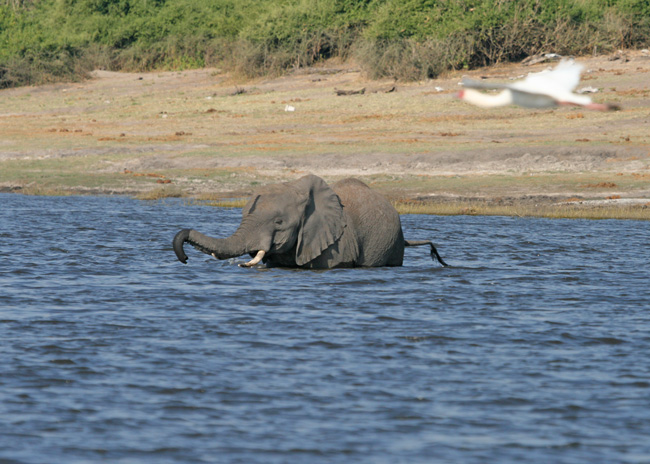
When a second bull followed, and then another, the Lead Bull became agitated.
After a few minutes, the agitated Lead Bull turned around and shook his gargantuan head and raised his trunk, demonstrating his dominance.
Sparring elephants on land confront each other by raising their heads as high as possible; they also swat and spar one another with their tusks or trunks. Flaring ears, trumpeting and lots of kicked-up dust. Usually the taller one dominates, especially if his tusks are bigger.
We didn’t know what to expect with the bulls so deeply surrounded by water.
The Lead Bull turned around several times, to scare them off, but the other two did not relent.
Then he turned and faced them, walked directly to the closest bull.

They pressed heads…twisted trunks…locked tusks.

There was a lot of big splashing and occasionally one head or another slipped under the water.

It was very exciting and a little intimidating being nearby. Three angry bull elephants duking it out. I wondered if one of them might drown the other?
But this wasn’t a television nature program with days of film footage and accompanying, escalating music. This was real life–15 minutes on the Chobe where there was currently plenty of water for everyone.
Somewhat anticlimactically, the two bulls retreated back to shore and the Lead Bull crossed the river alone.
After the elephants had settled their tiff, our guide started up the engine and off we went.
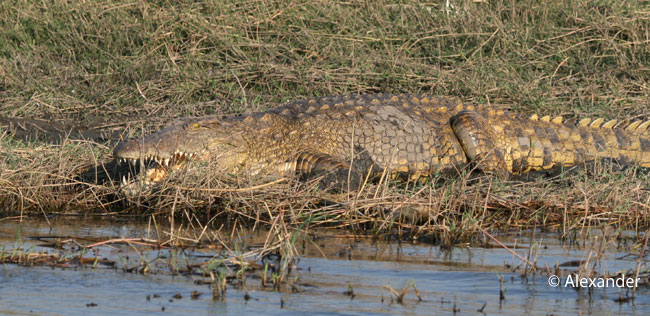
I wouldn’t say peace was restored with all the crocodiles lining the shore, but the drama had subsided for the moment.
To me, it was as dreamy as life gets.
Written by Jet Eliot.
Photos by Athena Alexander.
